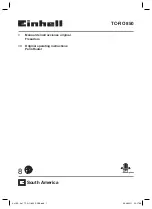
DXS-3326GSR Gigabit Layer 3 Switch
Interface Metric
A read-only field that denotes the Metric value of the current IP Interface setting.
Click
Apply
to implement changes made.
OSPF
The Open Shortest Path First (OSPF) routing protocol uses a
link-state
algorithm to determine routes to network
destinations. A “link” is an interface on a router and the “state” is a description of that interface and its relationship to
neighboring routers. The state contains information such as the IP address, subnet mask, type of network the interface is
attached to, other routers attached to the network, etc. The collection of link-states is then collected in a link-state database
that is maintained by routers running OSPF.
OSPF specifies how routers will communicate to maintain their link-state database and defines several concepts about the
topology of networks that use OSPF.
To limit the extent of link-state update traffic between routers, OSPF defines the concept of
Area.
All routers within an
area share the exact same link-state database, and a change to this database on one router triggers an update to the link-state
database of all other routers in that area. Routers that have interfaces connected to more than one area are called
Border
Routers
and take the responsibility of distributing routing information between areas.
One area is defined as
Area 0
or the
Backbone.
This area is central to the rest of the network in that all other areas have a
connection (through a router) to the backbone. Only routers have connections to the backbone and OSPF is structured such
that routing information changes in other areas will be introduced into the backbone, and then propagated to the rest of the
network.
When constructing a network to use OSPF, it is generally advisable to begin with the backbone (area 0) and work outward
Link-State Algorithm
An OSPF router uses a link-state algorithm to build a shortest path tree to all destinations known to the router. The
following is a simplified description of the algorithm’s steps:
•
When OSPF is started, or when a change in the routing information changes, the router generates a link-state
advertisement. This advertisement is a specially formatted packet that contains information about all the link-
states on the router.
•
This link-state advertisement is flooded to all router in the area. Each router that receives the link-state
advertisement will store the advertisement and then forward a copy to other routers.
•
When the link-state database of each router is updated, the individual routers will calculate a Shortest Path Tree to
all destinations
−
with the individual router as the root. The IP routing table will then be made up of the
destination address, associated cost, and the address of the next hop to reach each destination.
•
Once the link-state databases are updated, Shortest Path Trees calculated, and the IP routing tables written
−
if
there are no subsequent changes in the OSPF network (such as a network link going down) there is very little
OSPF traffic.
Shortest Path Algorithm
The Shortest Path to a destination is calculated using the Dijkstra algorithm. Each router is places at the root of a tree and
then calculates the shortest path to each destination based on the cumulative cost to reach that destination over multiple
possible routes. Each router will then have its own Shortest Path Tree (from the perspective of its location in the network
area) even though every router in the area will have and use the exact same link-state database.
The following sections describe the information used to build the Shortest Path Tree.
OSPF Cost
Each OSPF interface has an associated cost (also called “metric”) that is representative of the overhead required to send
packets over that interface. This cost is inversely proportional to the bandwidth of the interface (i.e. a higher bandwidth
interface has a lower cost). There is then a higher cost (and longer time delays) in sending packets over a 56 Kbps dial-up
connection than over a 10 Mbps Ethernet connection. The formula used to calculate the OSPF cost is as follows:
Cost = 100,000,000 / bandwidth in bps
As an example, the cost of a 10 Mbps Ethernet line will be 10 and the cost to cross a 1.544 Mbps T1 line will be 64.
135
















































